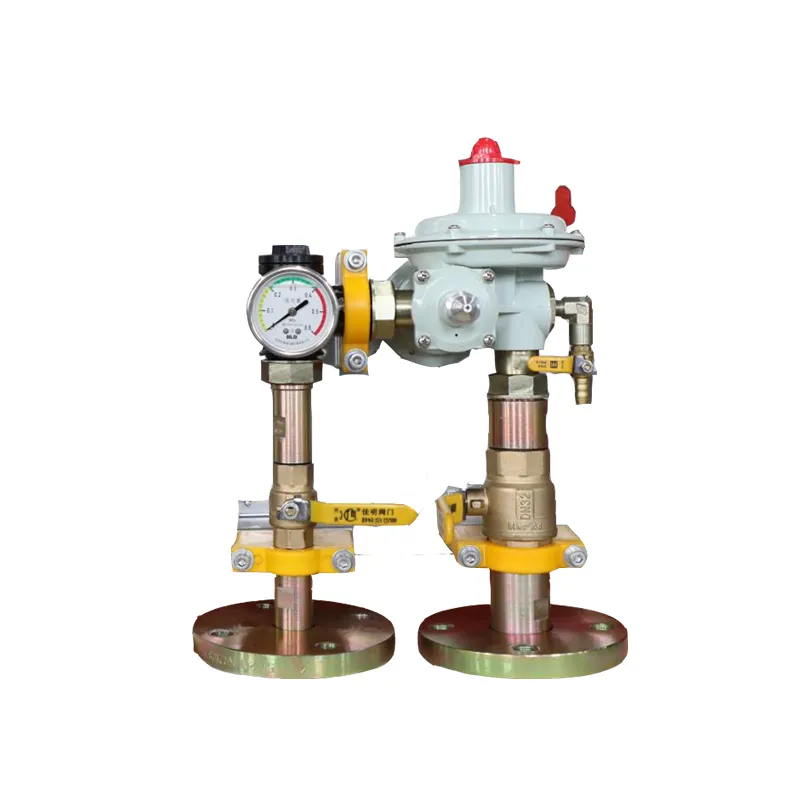
Dec . 26, 2024 13:37
Back to list
natural gas pressure reducer
Understanding Natural Gas Pressure Reducers A Key Component in Gas Distribution Systems
Natural gas is a crucial energy source that powers homes, businesses, and industries around the world. Ensuring that this gas is delivered safely and efficiently involves a number of key components, one of which is the natural gas pressure reducer. These devices play a pivotal role in managing gas pressure within distribution systems, making them essential for both safety and operational efficiency.
What is a Natural Gas Pressure Reducer?
A natural gas pressure reducer is a device designed to lower the pressure of natural gas from a high-pressure source to a level suitable for consumer use. Gas is typically transported through pipelines at high pressures to ensure efficient movement over long distances. However, once it reaches the end-user, the pressure needs to be significantly reduced to prevent damage to appliances and ensure safe operation.
Most pressure reducers operate using a mechanical mechanism that adjusts the flow of gas based on the downstream pressure. When the pressure drops below a set point, the reducer opens to allow more gas to flow, and when the pressure increases, it throttles back. This automatic adjustment is crucial for maintaining a steady and safe supply of gas.
Types of Pressure Reducers
Natural gas pressure reducers come in various types, each designed to suit different applications and pressure requirements
1. Single-Stage Pressure Reducers These are the simplest form of pressure reducers and are typically used for low to medium pressure applications. They are straightforward in design and easy to maintain.
2. Two-Stage Pressure Reducers In applications where gas must be reduced from very high pressures, two-stage reducers are used. These devices provide a more stable output pressure and are often employed in large-scale gas distribution systems.
natural gas pressure reducer

Importance of Pressure Management
Effective pressure management is vital for several reasons
- Safety High pressure can lead to dangerous situations, including gas leaks and explosions. Properly functioning pressure reducers help to minimize these risks by controlling gas pressure to safe levels.
- Efficiency Maintaining the correct pressure is essential for the efficient operation of gas appliances. Too high or too low pressure can lead to inefficient combustion, increased emissions, and higher energy costs.
- Regulation Compliance Many regions have strict regulations regarding gas pressure in distribution systems. Pressure reducers help utility companies comply with these regulations by ensuring the gas delivered to customers meets safety and performance standards.
Maintenance and Considerations
To ensure optimal performance and longevity of natural gas pressure reducers, regular maintenance is essential. Operators should check for leaks, ensure that moving parts are lubricated, and verify that the pressure settings are calibrated correctly. Additionally, monitoring the reducer for unusual noises or fluctuations in gas pressure can help identify potential problems before they lead to system failures.
When selecting a pressure reducer, it is also important to consider factors such as the gas flow requirements, the expected inlet pressure, and the ambient conditions in which the device will operate. Working with a qualified engineer can assist in selecting the appropriate type and size of pressure reducer for a specific application.
Conclusion
Natural gas pressure reducers are vital components in the gas distribution network. They ensure that natural gas is delivered safely and efficiently, protecting both consumers and infrastructure. With advancements in technology and engineering practices, these devices are becoming more reliable and capable of meeting the demands of modern energy use. Regular maintenance and proper selection of pressure reducers will not only enhance the safety and efficiency of gas delivery systems but also contribute to a more sustainable energy future. As we continue to rely on natural gas, understanding and optimizing these essential systems will play a critical role in our energy landscape.
Next:
Latest news
-
Safety Valve Spring-Loaded Design Overpressure ProtectionNewsJul.25,2025
-
Precision Voltage Regulator AC5 Accuracy Grade PerformanceNewsJul.25,2025
-
Natural Gas Pressure Regulating Skid Industrial Pipeline ApplicationsNewsJul.25,2025
-
Natural Gas Filter Stainless Steel Mesh Element DesignNewsJul.25,2025
-
Gas Pressure Regulator Valve Direct-Acting Spring-Loaded DesignNewsJul.25,2025
-
Decompression Equipment Multi-Stage Heat Exchange System DesignNewsJul.25,2025

